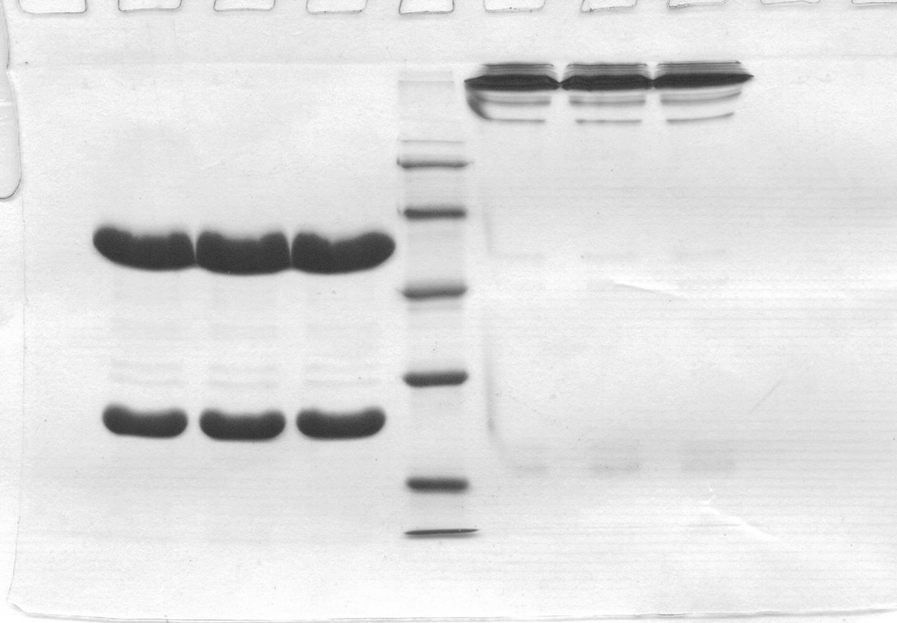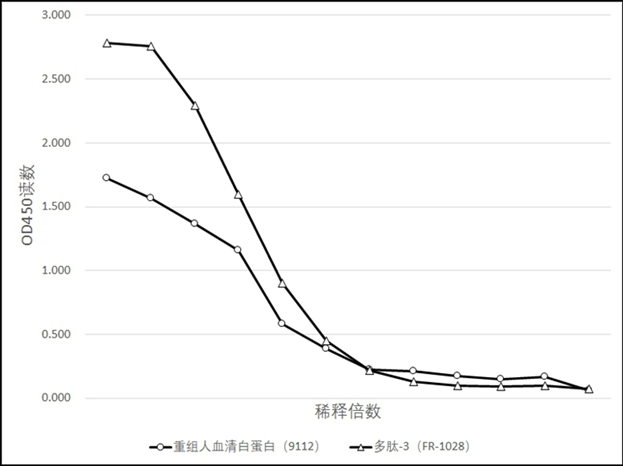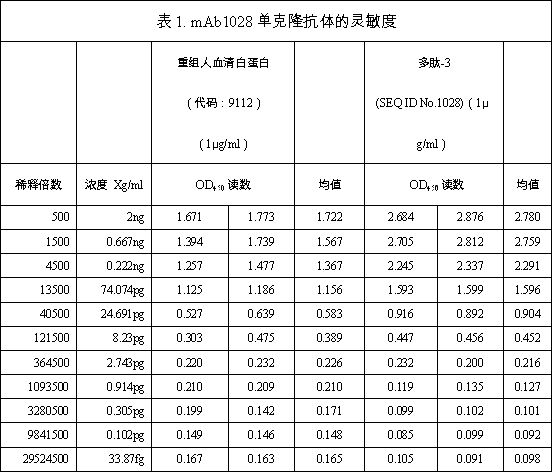Anti-human serum albumin monoclonal antibody
A technology of human serum albumin and monoclonal antibody, applied in the direction of anti-animal/human immunoglobulin, instruments, biochemical equipment and methods, etc., can solve the problem of high price, unknown binding site, and inability to provide mouse hybridoma cells Strain and other problems, to achieve high sensitivity and strong specificity
- Summary
- Abstract
- Description
- Claims
- Application Information
AI Technical Summary
Problems solved by technology
Method used
Image
Examples
Embodiment 1
[0040] Example 1 Computer software analysis confirms antigenic determinant and artificially synthesized antigenic determinant polypeptide
[0041] The amino acid sequences of human, bovine, monkey, mouse, sheep and rabbit serum albumin were analyzed for molecular structure, and the possible epitope amino acid polypeptide sequences were confirmed. These peptides (short peptides) are artificially selected and outsourced to synthesize the peptides.
[0042] The human serum albumin selected by artificial synthesis computer may be the amino acid sequence polypeptide-short peptide of the antigenic determinant, and after confirmation, the following amino acid sequence polypeptide is selected and synthesized to carry out the research on the preparation of anti-human serum albumin monoclonal antibody. The artificially synthesized polypeptide amino acid sequences are:
[0043] SEQ ID No. FR-1011: VRPEVDVMCTAFHDNEET (18aa, 140-157aa)
[0044] SEQ ID No. FR-1012: LLRLAKTYETTLEKCCAAAD (2...
Embodiment 2
[0052] Example 2 Immunization of mice and establishment of hybridoma cell lines
[0053] Mix and fully emulsify equal volumes of 200 μg of KLH-coupled short peptide + Freund’s complete adjuvant, and implement basic immunization on BalB / c mice by intraperitoneally injecting BalB / c mice with a volume of 0.2 ml per injection A short peptide was used to immunize five mice at the same time. For booster immunization, 100 μg of immune antigen coupled with KLH-coupled short peptide + incomplete Freund's adjuvant was mixed in equal volume and fully emulsified, and injected intraperitoneally once every 2 weeks, and the volume of each injection was 0.2 ml. Three days before cell fusion, 100 μg of KLH-coupled short peptide was mixed with 0.89% normal saline, and the mice were boosted by intraperitoneal injection. At the beginning of the second immunization, fundus blood of the mice was taken each time to measure the immune response to determine whether to continue the immunization. Gener...
Embodiment 3
[0054] Example 3 Preparation of mouse hybridoma cells
[0055] Preparation of NS-1 myeloma cells: select NS-1 cells in good growth state, wash the culture medium once, and gently blow down the NS-1 myeloma cells with 10ml culture medium.
[0056] Preparation of mouse splenocytes: Take the mice 3 days after the last booster immunization, remove the eyeballs and collect blood for the isolation of positive serum. The mice were killed by cervical dislocation, the abdominal cavity of the mice was opened aseptically, the spleen was taken out, washed with DMEM culture medium, and the connective tissue attached to the spleen was carefully removed. The spleen was then transferred to another plate containing DMEM medium. Squeeze with tweezers to fully release the mouse splenocytes to make a splenocyte suspension.
[0057] Cell fusion: Mix the NS-1 myeloma cells prepared above with splenocytes, centrifuge at 800×g for 5 minutes, and discard the supernatant. Gently shake the bottom of ...
PUM
 Login to View More
Login to View More Abstract
Description
Claims
Application Information
 Login to View More
Login to View More - R&D Engineer
- R&D Manager
- IP Professional
- Industry Leading Data Capabilities
- Powerful AI technology
- Patent DNA Extraction
Browse by: Latest US Patents, China's latest patents, Technical Efficacy Thesaurus, Application Domain, Technology Topic, Popular Technical Reports.
© 2024 PatSnap. All rights reserved.Legal|Privacy policy|Modern Slavery Act Transparency Statement|Sitemap|About US| Contact US: help@patsnap.com










